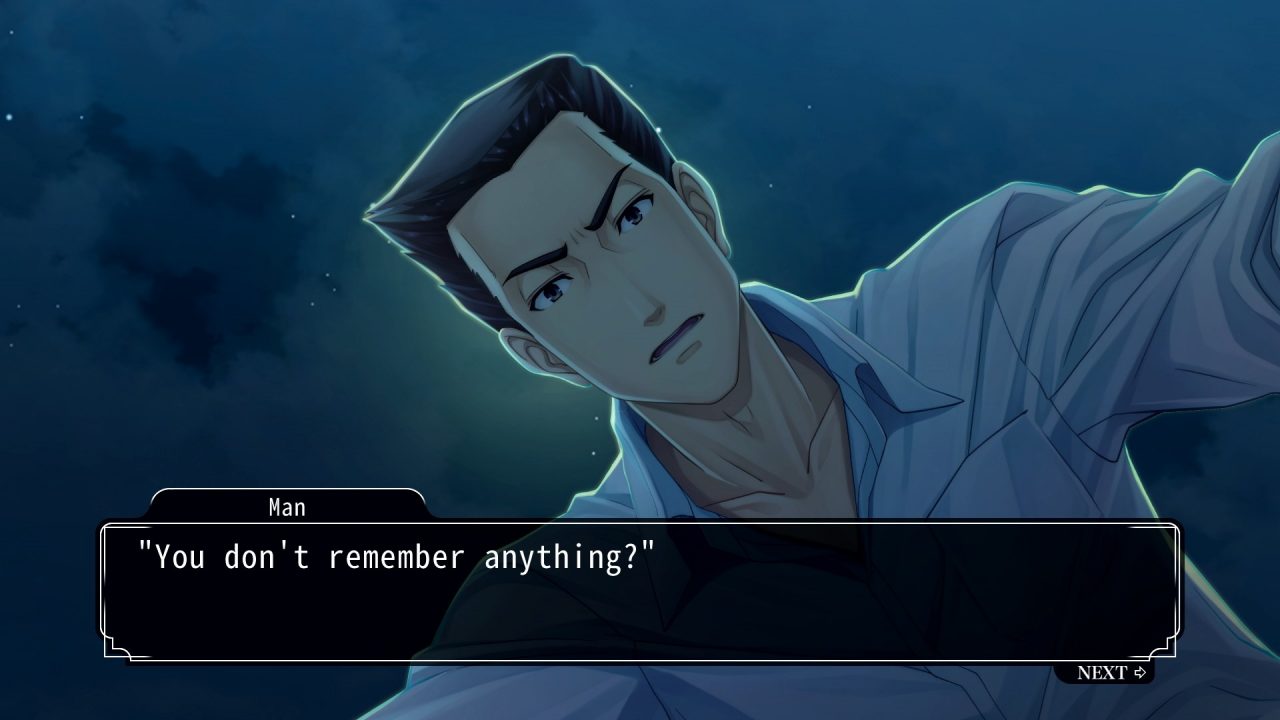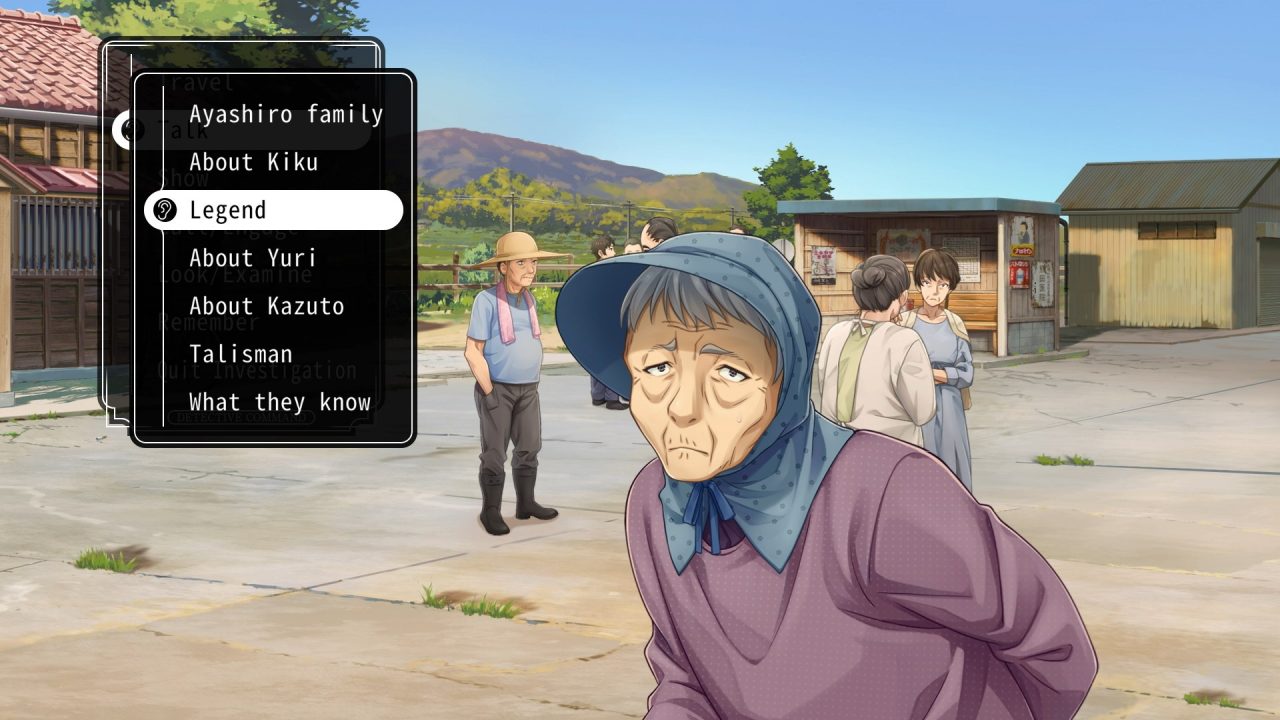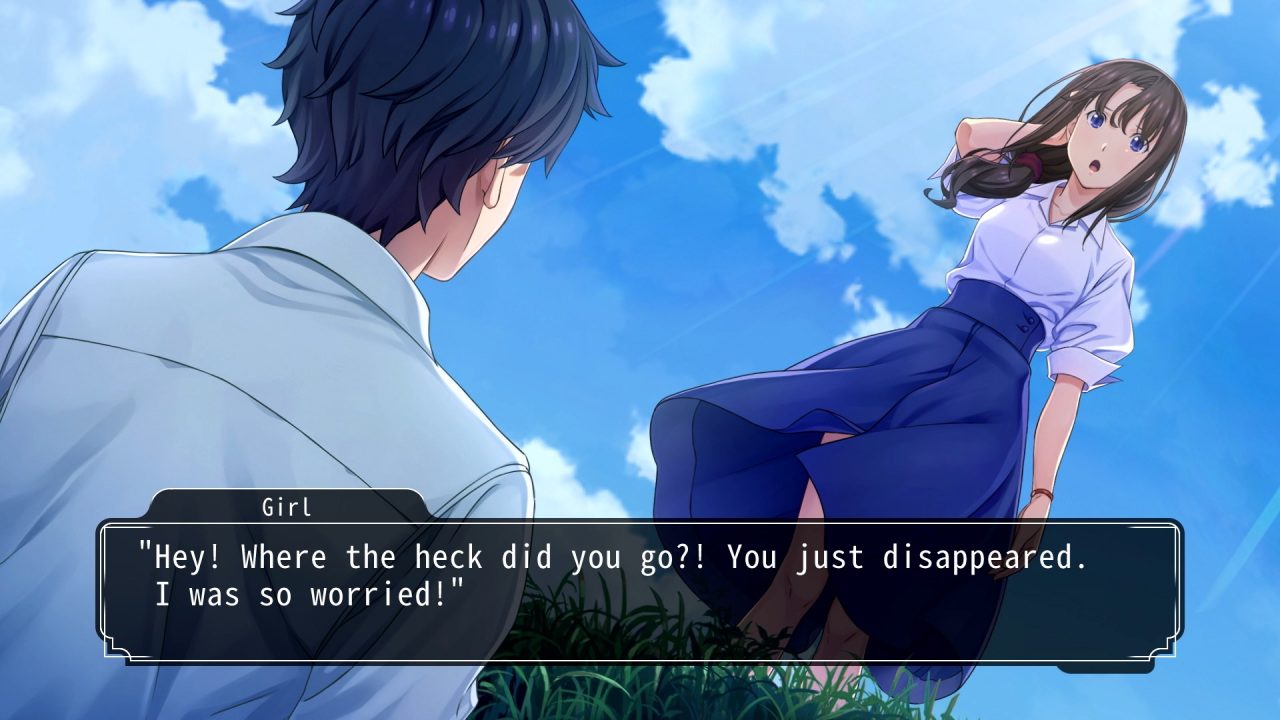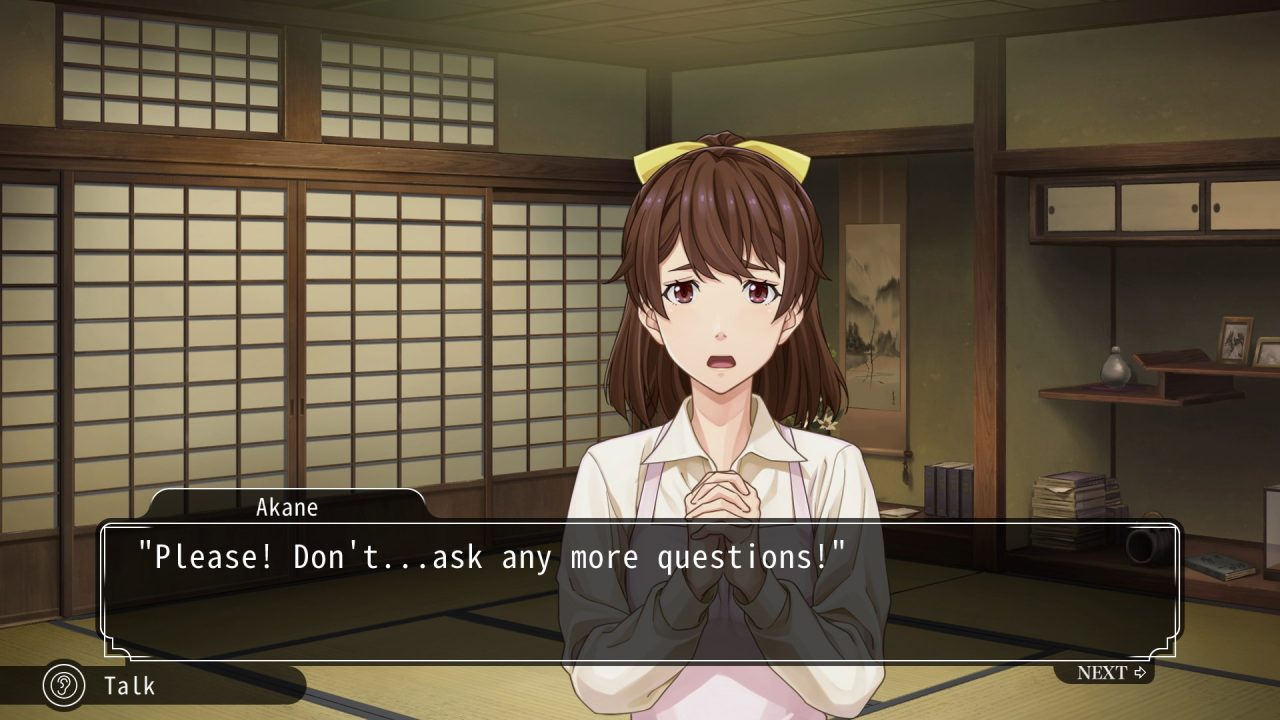A remake of the 1988 game of the same name for the Famicom Disk System add-on, Famicom Detective Club: The Missing Heir follows a young detective called to look into the strange circumstances surrounding the head of the wealthy yet ill-reputed Ayashiro family’s death. The game’s updated graphics are gorgeous, featuring ample animations that exhibit complete mastery over the “visual” in “visual novel.” Additionally, a slapping soundtrack, outstanding voice acting, and multi-faceted mystery merge to enhance the already solid “novel” portion of the game. In fact, the only place in which this polished project doesn’t please is in the mechanics that remain awkwardly aged, although genre enthusiasts will still find it a phenomenal foray into a compelling classic.
The first thing that stands out is The Missing Heir‘s beautiful visual finesse. Each character has a unique design—even nameless villagers are visually distinct, giving them lasting memorability. From the elder woman with a bonnet to a well-dressed secretary, or the meek butler to a stuffy, bespectacled businessman, no two characters look even remotely alike.
Each character also has a slew of unique animations to fit any occasion. The elderly woman shakes in fear when talking about the village rumors, while the secretary furrows her brow, crosses her arms, and taps her finger when you try her patience. The entire game is teeming with fluid animations that elevate the clean art and clear character designs.
Even slight movements stand out in all the right ways. Lip syncing is precise and aligns perfectly with the spoken dialogue. Upper bodies ebb and flow in an entirely convincing manner, a very impressive feat considering how unnatural and way too on-the-move some animated 2D illustrations can appear in other media. Visually, The Missing Heir is perfectly polished and as such is never tiring to look at.
When you’re not completely engrossed with how stunning the game looks, you notice how great it sounds. The soundtrack is always on point with the emotions the scenes need to convey. When investigating a murder scene, the music becomes fast and sinister, while it’s appropriately mellow and catchy when just looking around the countryside. One track in particular, titled “Interview” in the music mode that unlocks after beating the game, now accompanies my thoughts at frequent intervals. You also get the option to play the game with the remade, arranged tracks and sound effects or with classic Famicom or Super Famicom sounds, all of which sound fantastically crisp on the Nintendo Switch.

The Missing Heir is also fully voiced. Even the amnesiac protagonist—who can be named whatever you want—has his dialogue voiced. Although Japanese is the only option, it’s not a setback. The acting conveys strong emotion, from screams of fear to cries of anguish, from full, hearty laughs to uncertain murmuring. This is all accompanied by a polished translation that contains only a whopping two typos, both of which are minor mechanical errors—a period instead of a question mark and a lowercase start of a sentence, hardly memorable in the presence of the rest of the concise, clear writing.
The story that this writing conveys is head-scratching in all the right ways for a mystery. The protagonist is called upon to investigate the sudden death of Kiku Ayashiro, which is followed by her remaining family getting murdered one by one. However, an attack from an unknown assailant at the top of a cliff leaves the protagonist washed up on the nearby shore, all memories lost.
The investigation of the Ayashiro family murders intertwines cleverly with the goal to remember what happened leading up to the attack. Clues laid out through dialogue and some environmental details add up in your mind to piece together the overarching puzzle alongside the protagonist—or, sometimes, even ahead of his curve.

The story’s own curve ramps up drastically near the end. The ending is appropriately heartfelt, although the denouement doesn’t touch base with all the remaining characters like it feels it should. It’s not that there are loose ends, but rather, certain characters you may get attached to won’t be given any opportunity to digest the gravity of the complete picture.
Instead, the falling action surrounds the protagonist, which is at once appropriate and a little odd. Even with his memories returned, the player still doesn’t know anything about the basis for his detective work. That is, the Utsugi Detective Agency that he works for and Ayumi, the young lady he works with, are still completely shrouded in a vagueness that makes me wish we got just a little bit of extra time with the Missing Heir-exclusive cast members before the curtain drop, rather than focusing entirely on the protagonist.
Still, the story is compelling, even if some backstory details are left intentionally vague—a likely hook to encourage you to play the next game in the series, The Girl Who Stands Behind. It certainly works, thanks to the effective storytelling. Even on its own, the mystery behind the Ayashiro family murders stands strong as a one-off.

With such stunning visuals and sounds, and a strong story that only feels incomplete in a way that doesn’t inhibit the primary conflict, The Missing Heir seems primed as an all-star modern visual novel. Unfortunately, although the exterior has been thoroughly polished, the mechanics can be a bit rusty, clearly showing signs of age. It’s easy to get stuck not because you don’t understand how the current collection of clues coalesce, but rather because requirements for advancing can be utterly ridiculous at times.
More modern visual novels such as the Phoenix Wright series give each character you interact with unique dialogue options that advance as you engage with them. In The Missing Heir, however, almost all characters have the same dialogue options which pertain to information you’ve gained throughout your investigation. Of course, you’ll want to try all of them just in case, but many times characters won’t have anything to say about particular subjects.
This creates a very unique progression system where players must be alert to what the subject knows or may be hiding, pressing them by repeating the same “question” multiple times when necessary. But this also creates numerous moments where progression becomes needlessly enigmatic. You’ll frequently find yourself “looking” at the same object multiple times even though nothing about it has visibly changed, and sometimes the dialogue given by the subject isn’t clear that new information has unlocked in other choices. This results in lots of spamming of all available options in hopes of something new showing up.

As an example of how awkward this can be, there’s a point where you have to speak with a secretary. After you get all the information you can from her, you aren’t given a prompt to excuse yourself and leave to a new location. Instead, you have to purposefully anger her by touching a certain item in the office—multiple times!—to get her to force you out, even though nothing indicates that you’d gain anything from touching it. Rather than streamlining the process, The Missing Heir maintains its clunky system of progression—and this is hardly the worst offender. Even when I had all the information necessary to come up with new theories, I had to look up a guide more than once to make sure I was doing things in the right order so that I could finally move on.
For visual novel fans, these shortcomings are a small price to pay for such a stunningly polished product, but they still stick out like a sore thumb amidst the rest of the jaw-dropping surroundings. Mystery fans and visual novel fans alike would be remiss not to check out this brilliant revival of a classic title, but they must be prepared with an extra set of thinking caps that otherwise shouldn’t be necessary.


